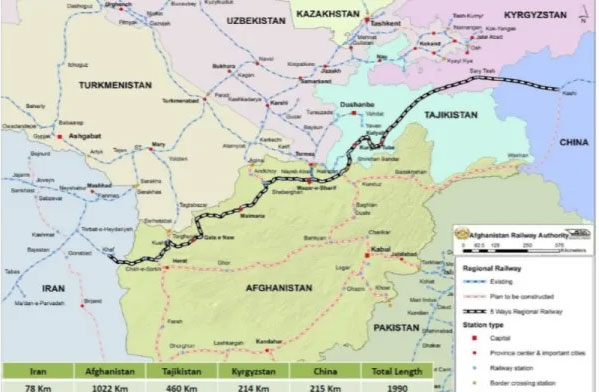Iran-Afghanistan Railway Back On The Agenda
Would link the industrial Afghanistan city of Herat to the INSTC
The two heads of Iran Railways (RAI) and Afghanistan Railways have met to discuss ways to resume the launch of Khaf-Herat Railway. This planned route would extend into Afghanistan’s Western border to the industrial city of Herat and assist with Afghani reconstruction and development. Iran has already built a Free Trade and Processing Zone on its side of the border at Khaf.
The Head of Afghanistan Railways, Bakht-ur-Rahman Sharafat, has welcomed the development of ties with Iran, and called for cooperation with officials of the Iranian Ministry of Roads and Urban Development to resume the construction of the Khaf-Herat Railway.
The project is likely to be financed by Iranian investors who will be looking at a return of investment, a factor acknowledged by Sharafat.
In December 2020, Iran and Afghanistan inaugurated the first cross-border railway link between the two countries. Work on the 225–kilometer railway line, which links Khaf in eastern Iran with Herat in western Afghanistan began in 2007. Of this line’s four sections – two are in Iran and the rest in Afghanistan – just one section, an 85-km-long stretch running between Ghurian and Herat remains to be completed. There are additional plans to later extend this line east across Afghanistan to link up with Tajikistan railways and routes to China.

Other developments are also taking place to unite Afghanistan as part of the overall Belt and Road Initiative and Central Asian transit. Turkmenistan, which also borders Afghanistan, is developing a railway route through to Herat, again with Free Trade and Processing Zone capabilities in its Mary Province.
Herat is a city of some 550,000 people and has long been a strategic Silk Road hub. It is responsible for the bulk of Afghani trade with Iran and subsequently one of the countries wealthiest and more able cities. Linking it with Iran railways would provide Herat with access to the INSTC and markets in the Middle-East, India and Southeast Asia. Freight traffic is projected to be about two million tons per year, with oil, construction materials and food being exported to Iran, while grain, dried fruit, plants, and medical supplies are imported by Afghanistan.
The route could also serve passengers. Calculations have shown a potential for passenger traffic to reach 321,000 passengers per year, and cargo – 6.8 million tons per year.
Related Reading
About Us
Chris Devonshire-Ellis is the Chairman of Dezan Shira & Associates. The firm assists British and Foreign Investment into Asia and has 28 offices throughout China, India, the ASEAN nations and Russia. For strategic and business intelligence concerning China’s Belt & Road Initiative please email silkroad@dezshira.com or visit us at www.dezshira.com





